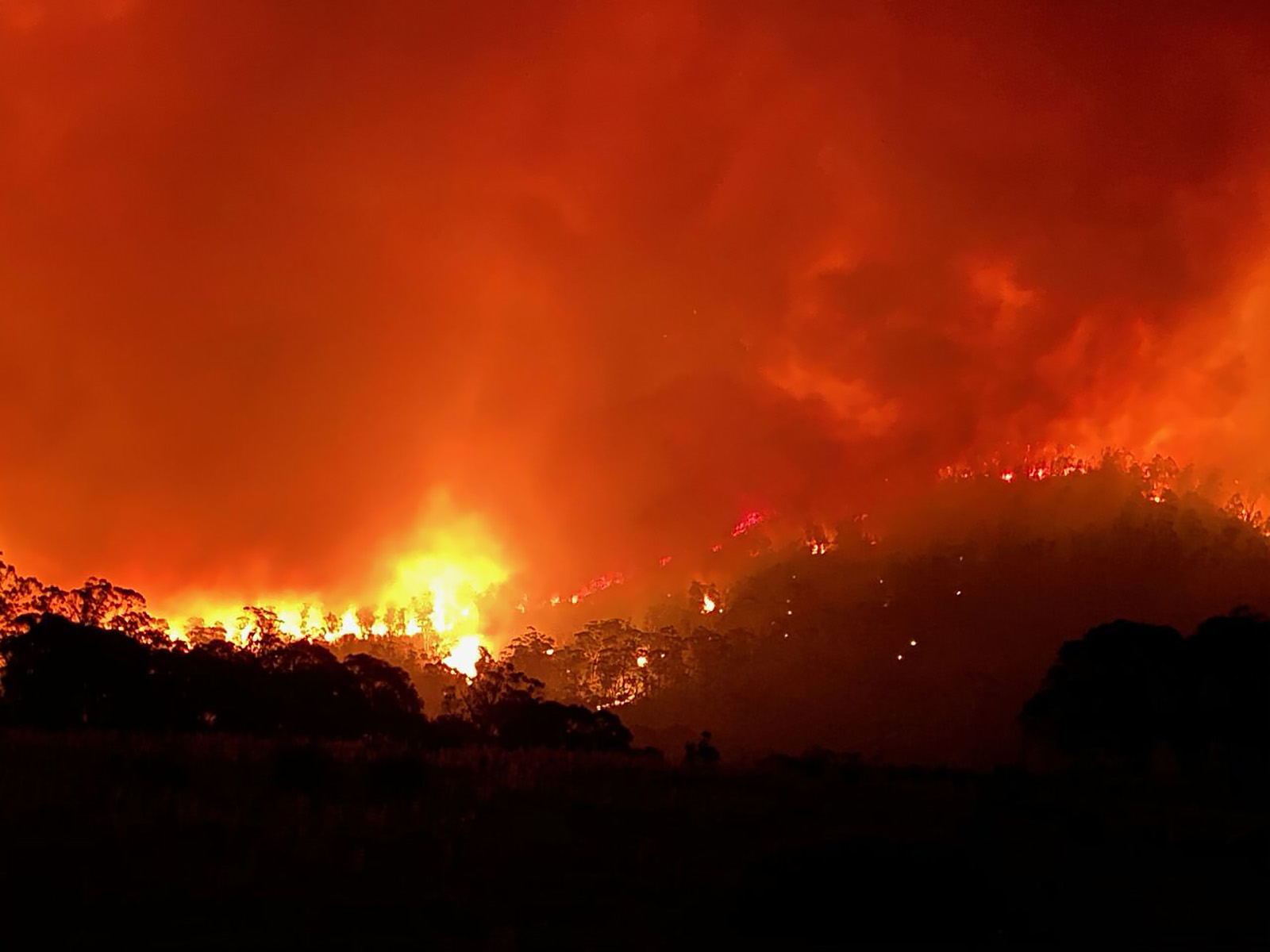Reading Time: 3 minutes
If the group is directly threatened by a bushfire, the following actions could be taken to give the best chance of survival.
Last resort if on foot
- Prepare and take shelter well before the fire arrives.
- Consider the direction the fire is likely to come from.
- Move to a lower area if possible. Do not go uphill as bushfires travel rapidly up slopes.
- Bushfires cannot be out-manoeuvred on foot.
Find a location where the bushfire may be less intense (less vegetation), and offers protection from radiant heat.
Some possibilities may include:
- Larger running streams, a river, lake, dam or the sea
- Eroded gullies free of scrub
- Holes made by fallen trees, provided surrounding vegetation is light
- Bridges, culverts, road embankments or cuttings, gravel pits
- Deep wheel ruts on 4WD tracks
- Large rocky outcrops, caves or overhangs
- Areas with little or no vegetation
- Open ground e.g. sand dunes, a dry lake bed or a cleared area
- An area which has already been burnt
- Substantial building or infrastructure
Taking shelter
- Clear leaf litter and vegetation away from the site
- Use any additional protection to cover all exposed skin, for example sheets of bark, slabs of wood, soft earth to shield from the heat
- Drink plenty of water
- Cover mouth and nose with a damp cloth
- Keep low where there is less smoke and cooler air
Once the fire front has passed
- Consider moving to clear or burnt ground
- Be aware that some burnt areas will be very dangerous, due to the risk of falling trees and of burning cavities in the ground
Notify 000 and the Trip Contact at the earliest opportunity.
Last resort if in a vehicle
Sheltering from a bushfire in a vehicle is extremely dangerous and can result in serious injury or death. THIS IS A LAST RESORT, used only if it is not possible to safely drive out of the area or relocate to a safe place.
Make an early decision to allow time to find the best location.
Position the car to minimise exposure to radiant heat
- Park away from dense vegetation or forest – try to find a clearing or the least amount of scrub
- Stop off the roadway and turn hazard lights on
- Leave the engine running with the air conditioner on recirculate
- Shut all windows and vents
- If possible, park behind a barrier that will provide protection from radiant heat such as:
- a rocky outcrop
- an embankment
- a cutting
- a gravel pit
- Avoid locations where falling trees could strike the vehicle
- Face the car towards the oncoming fire front
- Stay in the car
- HIGH PRIORITY: Cover up with woolen blankets and get down below window level
- Drink water to prevent dehydration
- Cover mouth and nose with a damp cloth
When the fire front is close by
- Turn air conditioning off
- Turn engine off
- Heat, smoke and embers will increase
- Smoke may enter the car and fumes will be released from interior plastics
- Stay as close to the floor as possible to minimise inhalation of fumes
- Tyres and external plastic body parts may catch alight
- If possible, stay in the car until the fire front has passed
- There will be some very frightening minutes of extreme heat, noise and smoke if the fire front burns over the vehicle
- Do not open the windows
- Fuel tanks are very unlikely to explode
Once the fire front has passed and the temperature has dropped
- Carefully exit the car, take care as metal parts may be extremely hot
- Move to a safe area such as bare ground or an area that has already been burnt
- Be aware of the danger of falling trees or branches and cavities in the ground that are still burning
- Stay covered in woolen blankets, continue to drink water
- Wait for assistance
Notify 000 and the Trip Contact at the earliest opportunity.
References and acknowledgements
State Rural or Country Fire Service websites have a great deal of informative educational and explanatory material on bushfire safety.
Source material used in this article was accessed in April 2020.

